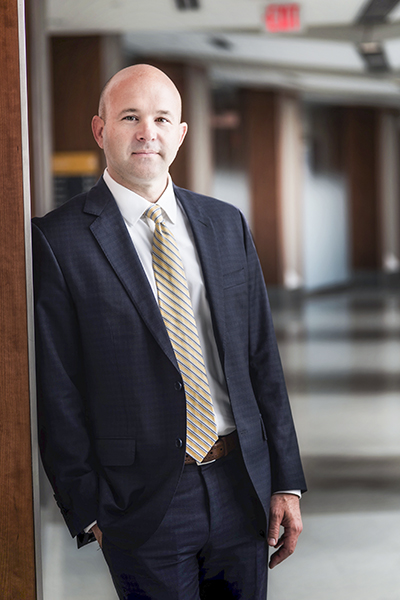|
Getting your Trinity Audio player ready... |
As a team, Myra Davis, Teresa Tonthat, and John Hamm combine their ever-evolving leadership styles to bolster the successes of each other, their teams, and Texas Children Hospital’s (TCH) mission of providing optimal care for women and children. Over the past year, the team worked together to drive TCH through its digital transformation, which aimed to optimize and streamline digital assets throughout each department and drive the organization toward safer, more accurate healthcare practices.
As full-time leaders and full-time parents, the team united their management styles to bring the project to fruition. Davis, Tonthat, and Hamm spoke to American Healthcare Leader about the ways in which their parenting styles inform their leadership styles and vice versa as well as their strategy behind enhancing TCH’s digital processes.
A Direction Toward Delegation

When Davis first arrived at TCH seventeen years ago, her sons were two and ten years old. As time passed, she watched her career progress, moving up the ranks from director of customer support to her current position as senior vice president and chief information officer. But, more so, she watched her sons grow into young men; and now, as her youngest son moves away to embark on his first year of college, she reflects upon her experience and journey as a proud mother as well as each lesson she learned along the way that made balancing work and life possible.
“When I started here, my sons were just kiddos,” Davis reflects. “So, my philosophy, and the one I encourage others to have, is to accept that the ball will be dropped. We need to pick it up and move on. In other words, mistakes will happen—own them and move on. It’s about recognizing that a missed homework assignment is not the end of the world. Delegation and empowerment are key to your sanity and focusing on your sanity and mental health is critical.”
“It’s important to recognize that we can’t do everything by ourselves.”
In Davis’s household, delegation is vital to maintaining a positive equilibrium between the duties of a parent and those of a business leader. Though, admittedly, Davis says her system at home operates like a business, too—which is why it’s so successful. “In my home, we have sheets that show the food, maintenance, and cleaning we outsource,” Davis explains. “We run it like a business because I can’t do everything myself. My husband and I have been together for thirty years because I delegate and empower, and he grows with it.”
At TCH, Davis echoes these messages throughout her leadership, reinforcing the importance of moving with the highs and lows of life but not being held back by them.
“While my message is the same for both female and male leaders, I strongly emphasize it with my female leaders who are mothers,” Davis says. “We tend to hold ourselves to an extremely high level of standards and expectations, professionally and personally, that are not realistic. It’s important to recognize that we can’t do everything by ourselves.”
Synthesizing Standards

Compared to Davis, Chief Information Security Officer Tonthat currently stands on the opposite end of parenthood as a mother of three young children. Throughout the journey of raising a five-, six-, and seven-year-old, Tonthat and her husband have learned to evolve their parenting styles to harmonize with their kids’ growth, developing as problem-solvers and rule-setters while keeping their children at the forefront of their priorities.
“In 2015, when our children were younger, our parenting style was definitely on the permissive spectrum,” she explains. “Now that our children have grown, we’ve shifted our parenting style from permissive to more authoritative. We have clear standards and some level of expectations but also make time to reciprocate attention to them.”
“The fact of the matter is that we constantly feel outnumbered!” Tonthat laughs. “The greatest lesson we’ve learned throughout our journey as parents is with constant communication, compromises, alignment on expectations, and both parents putting in 110 percent, we are able to overcome every obstacle that comes our way.”
“I believe a strong leader holds the skill of knowing when to adapt to introduce a bit of the permissive style. You have to empower your team to make their own decisions.”
Naturally, Tonthat’s authoritative yet compromising parenting style transfers seamlessly into her leadership style at TCH. While she says it has evolved over the past eighteen years, she’s noticed the most change during the past year after joining TCH. Tonthat emphasizes respect and transparency on all levels of her team and holds weekly meetings to ensure that everyone is on the same page. Overall, she believes that these efforts strengthen team alignment and trust.
“I’m respectful to other’s opinions while having high expectations and maintaining clear boundaries,” she says. “However, I believe a strong leader holds the skill of knowing when to adapt to introduce a bit of the permissive style. You have to empower your team to make their own decisions. I am truly a proponent of the ‘fail fast, learn faster’ approach. This approach is only successful if my team is confident that I will always have their back.”
Learning from the Little Things

Hamm, the vice president of information technology and biomedical engineering at TCH and a vital member of Davis and Tonthat’s team, says that, for him, building strong relationships was a key skill he developed during his years as a father then transferred to his team.
Hamm started his first season of fatherhood at the age of nineteen when he and his wife had two boys. Naturally, as a young father, he focused heavily on establishing a secure and safe environment for his family, “checking the standard boxes” that ensured stability and prosperity: a strong career, a comfortable house, a reliable car, college savings accounts, and good educations.
As time went on, however, and Hamm entered his second season of fatherhood more than a decade later when he and his wife had two more boys and their first girl, he realized that being present and understanding were more important than ensuring the standard boxes of parenthood were checked. As he reflects upon his career, he realized that these lessons learned in parenthood were very much the same, and with the help of his team, he was able to bring value to both his work and his relationships.
“Now, I focus more on building life-long relationships, instilling forever core values, and creating lasting memories,” he says. “Looking back, I can now recognize the areas of focus and attention that were truly meaningful. When I started my career, I was taught that you could never have friends at work, which initially caused me to keep an arms-length with people that I worked with. Like parenting, I checked the boxes to ensure successful business outcomes.
“After a significant job change and through some wonderful mentors, I now realize that my true treasures of my career are those relationships built along the way,” he continues. “I hope to continue to learn how to build meaningful relationships. The more I practice this, the more I am finding joy, interests, and opportunities to make life for myself and those that I care about better.”
Joining Forces
Recently, the trio joined forces to commence the hospital system’s digital transformation to improve services for all its members. Health organizations across the world are embarking on a similar transformation, integrating artificial intelligence, telemedicine, and electronic recordkeeping into their systems. If enacted properly, this allows doctors to work more precisely and patients to have better access and understanding of their health.
“The world has become digital outside of us, and more of our patients want to be able to gain access to our physicians and services through different channels like their mobile phones,” Hamm explains. “So, over the last year, we’ve been working on enabling our technology so that we can better connect with our patients.”
Along with permitting this level of accessibility to both healthcare services and user information, the team acknowledges the possible dangers posed by hackers who could breach the system. As such, implementing precautionary measures was an essential step to avoid these problems in the future. Of course, a transformation of this sort never happens overnight. The TCH tech team worked with their partners to ensure the foundation they established beforehand served as a solid digital groundwork for years to come.
“Texas Children’s approach just makes sense,” says Tony Douglas, vice president of healthcare at Symantec. “Digital transformation requires using data and digital technologies to put the patient experience first. “However, until a health system’s data is secure, they are not able to move forward as quickly as they might like.”
“I encourage my team to keep abreast of new technologies that address emerging cyber threats,” Tonthat says. “Our key strategic partners have helped us along the way as we embark on our technological evolution. Symantec has partnered with us for over five years as we’ve built upon our security layers of defense. Their product portfolio around security technologies has enabled us to continue to safeguard our information assets. Symantec even provides ongoing training for my team on how we can continue to leverage our products to mature our security posture.
“The world has become digital outside of us…So, over the last year, we’ve been working on enabling our technology so that we can better connect with our patients.” –John Hamm
“We view Deloitte as one of our primary business thought leaders when it comes to information security and cyber risk,” she adds. “They have significant expertise in risk assessments, healthcare regulations, and security strategy development for large organizations such as Texas Children’s.”
By combining their leadership styles and delegating portions of the project, the tech team is now seeing their months of hard work come to a close. For each leader, working together to strike a balance between permissive and authoritative approaches and empowering individuals to cultivate purposeful relationships has been the lifeblood of the project itself. In many ways, much like the patient-centric mentality embodied by TCH as a whole, Davis, Tonthat, and Hamm leveraged the human aspect behind technology to offer better care for the women and children in their community.
“This project has been so successful because of the dynamic changes and growth that happened within Texas Children’s since we first began,” Davis says. “We brought the health plan into our infrastructure, which supports more than four hundred thousand members, and broke silos that existed between teams. The way we’ve grown as leaders while growing as parents speaks to the level of humility and grit and strength of our leadership. The light at the end of the tunnel of this very complex project wouldn’t have the success it has today without my team.”

